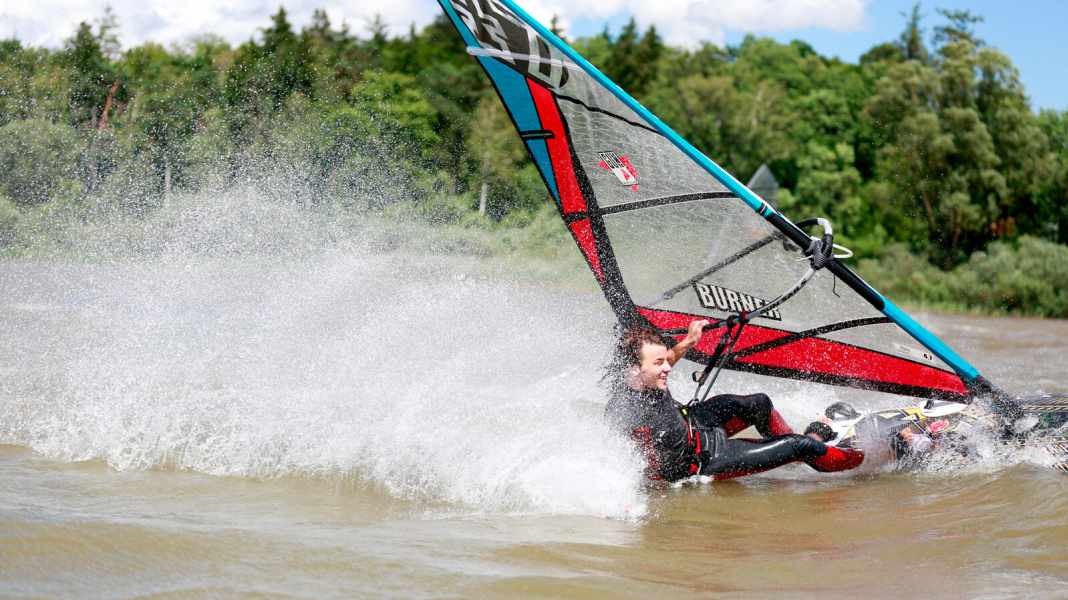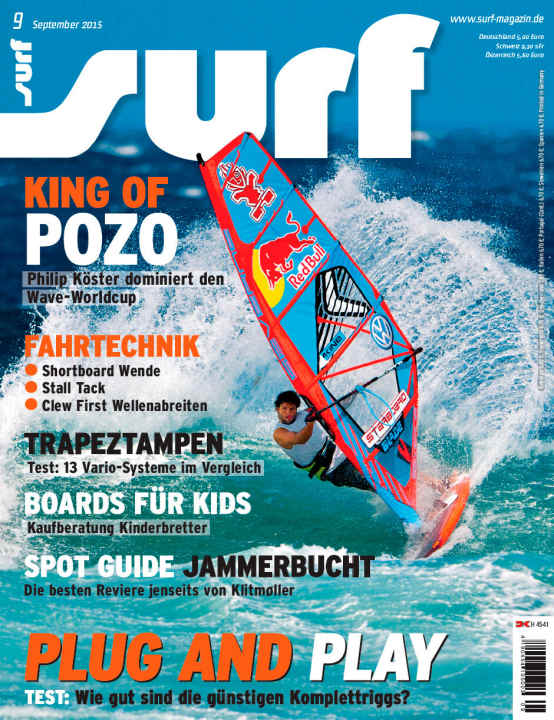

"Anything less than 24 is definitely wrong" - at least in the shop of surf tester Frank Lewisch, you will only be given shorter ropes extremely reluctantly without a good reason. For the test, we opted for a length of around 26 to 32 inches, which should be suitable in most cases and our team uses these ropes in the upper third of the scale. Shorter than 26 inches, at least for riders over 1.60 metres, usually means that other components have to be adjusted unfavourably to compensate (fork too low, for example). Tip from the test team: If you are still using ropes of 24 inches or even shorter, you should give longer ropes a chance for a few days - no matter how tall you are and whether you are travelling with a hip or seat harness. After a short period of familiarisation, you will be rewarded with more safety, better control of your rig and better performance.
Swinger Club: Opinions differ when it comes to "dangling" or "swinging". Whilst some people - especially waveboarders - often like to have the rope sticking out as rigidly as possible from the boom so that it doesn't accidentally hook back in when jumping, others prefer it when the rope can be allowed to swing towards the hook with a slight pull on the boom. Ropes that dangle nervously or even twist in strong gusts can hardly be said to have any advantages. When it comes to adjustment systems, webbing straps with aluminium clamps have become widely accepted. To lengthen them, just press the button briefly and the strap snaps through. This works consistently well.
The test results of these 13 rope models are available below as a PDF download:
- Ascan Powerset Vario - Dakine Comp Adjustable - Gaastra Race Adjustable - Gaastra Quick Adjustable - Gun Sails Harness Lines Vario - Ion Harness Lineset Vario - NP Race Vario Lines - NP Vario Lines - North Sails Vario Race Lines - Point-7 Harness Lines Vario - Prolimit Harness Lines Vario - Prolimit Race Adjustable - Unifibre Quick Vario EVO

